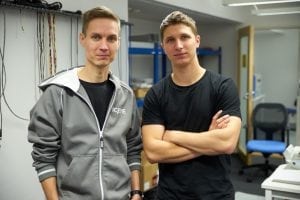Iceye Prepares Prototype Satellite for 2017 Launch
[Via Satellite 12-08-2015] Iceye, a Finland-based satellite startup, is designing a constellation of radar microsatellites that it anticipates will be more than 100 times less costly to produce than comparable larger spacecraft. The company recently raised $2.8 million in Series A funding to design and build a constellation of radar satellites capable of near-real-time imagery. The new resources are going directly into designing the company’s first satellite, which it hopes to have in orbit by the end of 2017.
“What we are doing next is the proof of concept satellite to showcase this technology of ours, both showing that the technology actually works and then secondly showcasing the data and how to offer services to customers,” Pekka Laurila, co-founder and CFO of Iceye told Via Satellite.
Laurila said Iceye is planning its constellation in two phases. The first starts with five to 10 satellites, which would be capable of revisits in a matter of hours. The second constellation would be larger, 30 to 50 satellites, bringing revisit rates down under an hour, possibly to half an hour. Each satellite is expected to have a mass of less than 100kg.
Iceye is investing in radar because, compared to optical Earth observation systems, this enables satellites to see through weather and continue to collect when outside sunlight areas. Since forming in 2012, the company has secured multiple investments and gained customers. Co-founder and CEO Rafal Modrzewski told Via Satellite that a government grant helped the company get started, and that Iceye received payment from one customer. This was enough to run the then-10-person company for half a year without further investment, even without satellites in orbit, he said.
Ice monitoring is a major focus for the company, as can be derived from its name, but is not an exclusive target. Early customers come from this domain, which both co-founders envision growing into a larger market.
“Tracking ice was the first market niche that we identified as extremely lacking in practical [Synthetic Aperture Radar] SAR information,” said Modrzewski. “It’s going to be a major one at first, but it’s not our primary anymore. Our business is extremely global already, but it is the one we know will be first to purchase images because that is the market that has been buying images before.”
In addition to the $2.8 million raised through True Ventures in Silicon Valley, with participation from Finland-based Lifeline Ventures and Founder.org in San Francisco, Calif., Iceye earlier this year secured another $2.8 million in Research and Development (R&D) funding from SME Instrument, part of the European Union’s (EU) Horizon 2020 research and innovation program. Iceye’s resources today are going into manufacturing, launch, and the company’s operations. Laurila said ground segment operations would be contracted out to newer companies providing downlink services. Commercial Off the Shelf (COTS) constitutes a fundamental part of the company’s strategy to scale up in satellites without ratcheting up costs.
“What it comes down to is you are using off-the-shelf components that are not originally designed for space use or for any particular space mission, but could be designed for cars or mobile phones or laptops. That in itself can easily drop component costs a thousand-fold. Then when you are building on top of this, your hardware costs are lower and when you are building your own service then you can build the lower lifespan of the satellites into your business model,” said Laurila.
Modrzewski said Iceye has seen larger funding options from the U.S., but anticipates Europe will catch up in the next few years before being ready for serious investments in space entrepreneurs. So far Iceye’s financing has come from a mix of investors in both Europe and the United States. Modrzewski said Iceye is seeking to “make the best of both worlds” by leveraging Silicon Valley resources while also tapping into growing interest from European investors to make the company’s vision a reality.
“There is a trend toward investing into more hardware that is quite strong and it’s reaching Europe slowly … these trends in Silicon Valley that have been growing the past few years, they are just about reaching Europe,” said Modrzewski, adding that some larger European funds have reached out to Iceye since the company closed its most recent round.
Modrzewski said Iceye will look to eventually conduct another funding round which, while not entirely focused on venture capital resources, will be in the tens of millions. Laurila said this would go into scaling up the constellation and putting out commercial services.
“We want to launch the whole constellation as soon as we can,” said Modrzewski.
